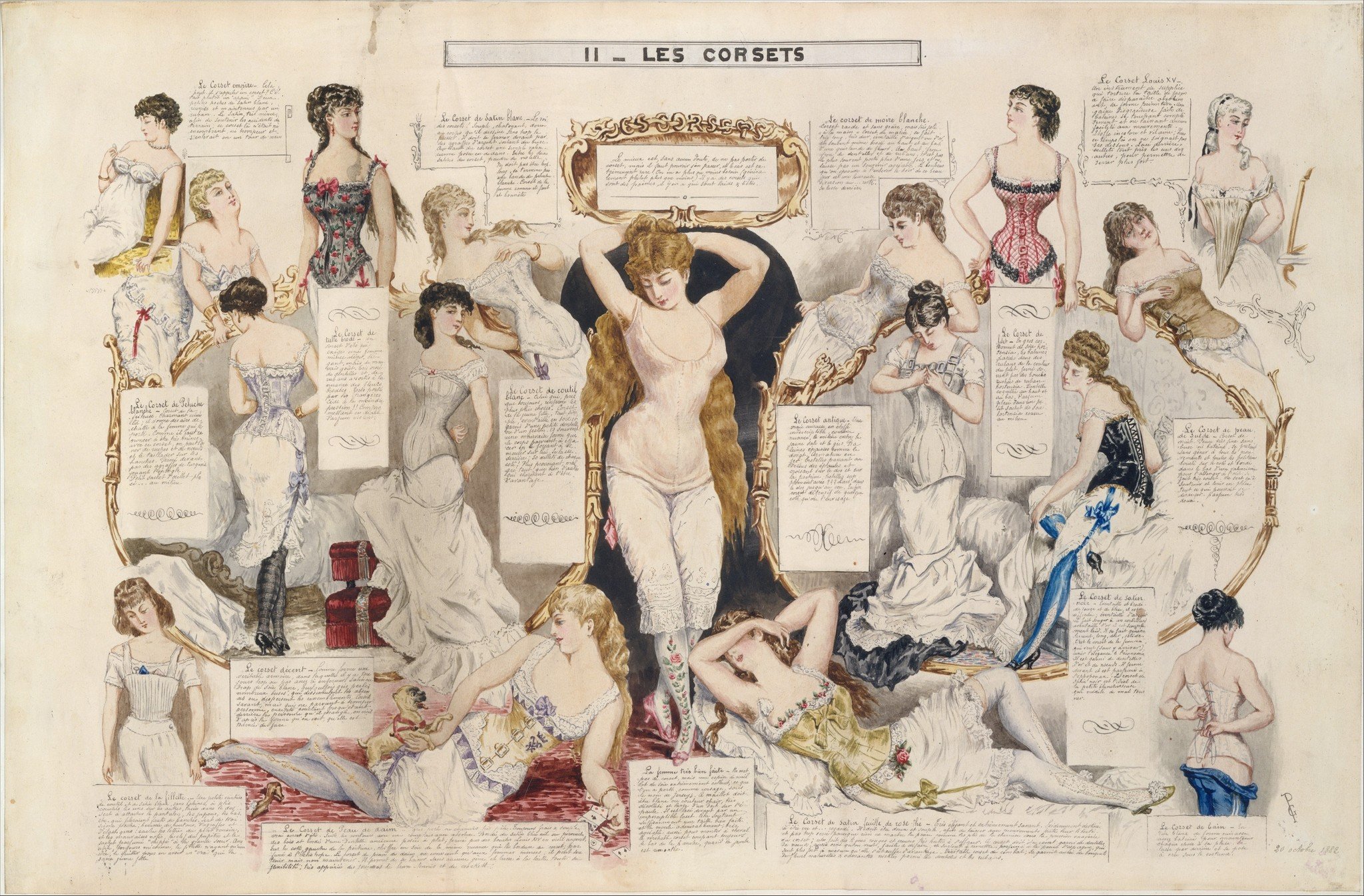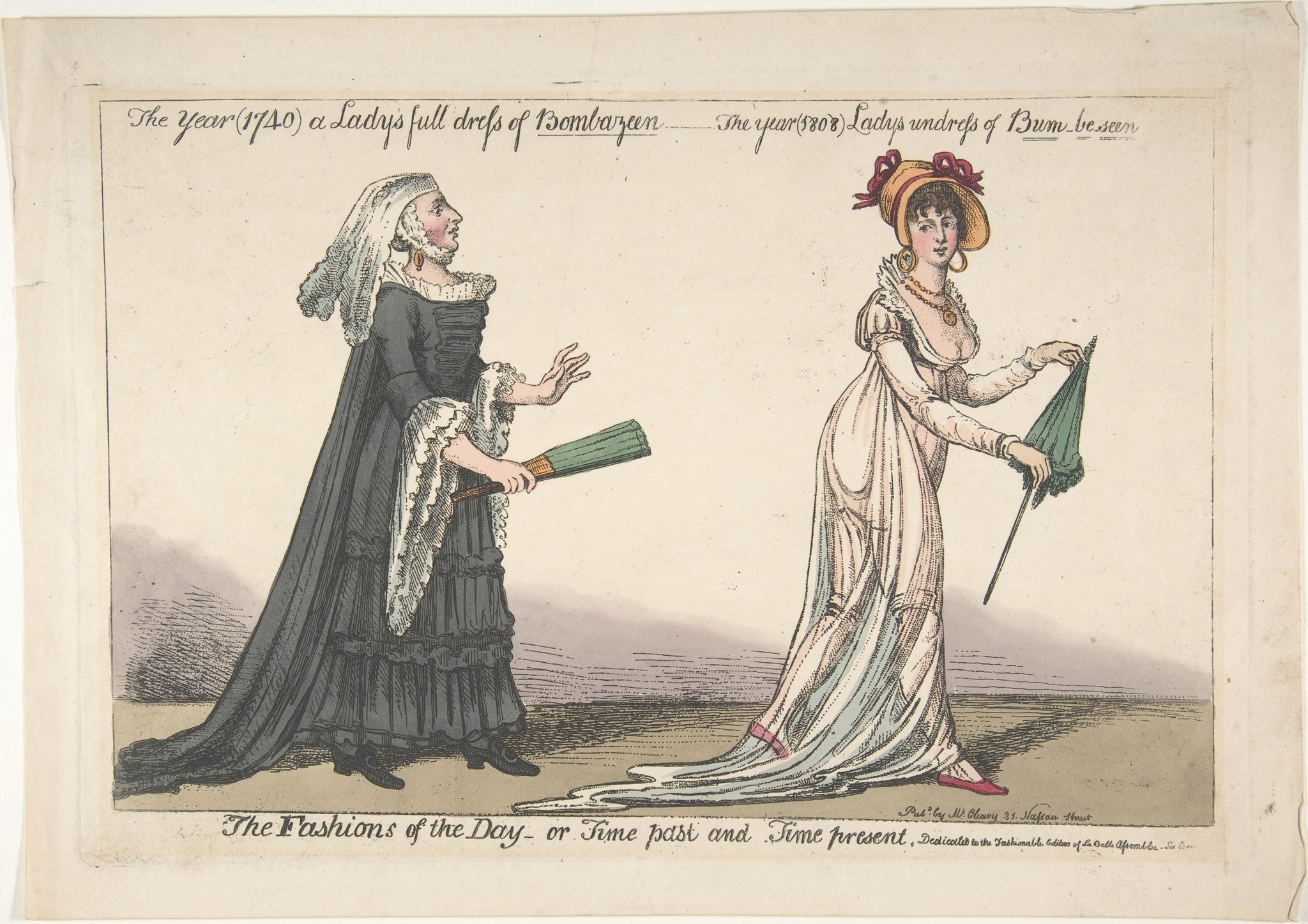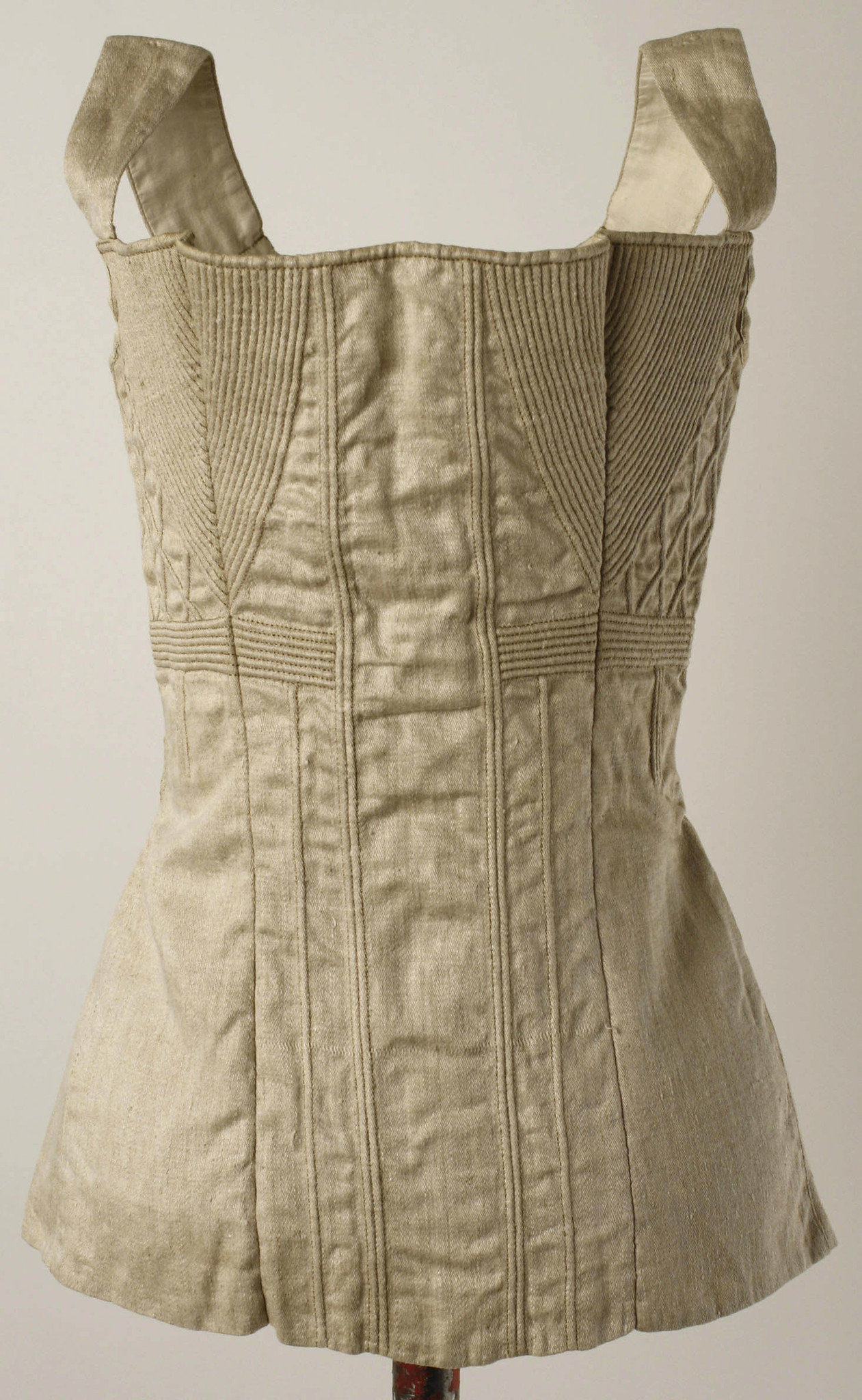

Login
Log in if you have an account
Register
Having an account with us will allow you to check out faster in the future, store multiple addresses, view and track your orders in your account, and more.
Create an accountCorset History III: The 19th Century


Henri de Montaut, Etudes sur les femmes, French, c. 1882–90, The Metropolitan Museum of Art 51.624.3
The hourglass-shaped corset is a classic image of Victorian women’s fashion. But an image is just that: one way to represent decades of fashion. In reality, the changing silhouettes of 19th-century corsetry were far more complex.
Dark Garden Corsetry has specialized in modern corsets for over 30 years, but this represents just a fraction of the history of fashionable corsetry. Historical designs inform modern ones, so we’d like to take you through the story of the corset one piece at a time. Today, we’re delighted to discuss the Victorian-era corsets that have a direct influence on many Dark Garden corset designs.
Earlier installations of this blog series covered the rise of pairs of bodies and stays in European and American fashion. These garments were boned with baleen, reeds, and even wood to maintain rigidity. The effect was to mold the wearer’s torso into a cone-like shape, with a tapered waist and flattened bust. However, by the early 19th century, a much more natural silhouette was favored in women’s fashion. Some might say this was a long time coming: there were complaints as early as 1731 that stiff stays were unattractive and unnatural. Indeed, as early as the 1770s, French women wore an unboned, quilted form of stays called a “corset.” This came from the Old French word for body, cors.
 |
In order to best fit the high-waisted neoclassical dress styles of the 1790s and early 1800s, in which a more natural breast shape was desired and restricted waist no longer necessary, women’s foundation garments no longer required conical stays. Such a drastic shift in women’s dress was quite shocking for many observers, and even inspired a 1794 English parodical song in which a woman declares, “Shepherds, I have lost my waist!” Others were scandalized by the appearance that women no longer wore undergarments at all. This is illustrated in an 1808 satirical print (left) comparing a traditional “Lady's Full Dress of Bombazeen” to a contemporary “Lady's Undress of Bum-be-seen.” However, women did wear undergarments — they were just much less conspicuous. In 1811, the ideal corset was described as “fitted exactly to the natural shape, without permitting any attempt to push the form out of its place.” (It was actually fashion-obsessed male dandies who were known for tight corsetry at this time.) |
||
| The Fashions of the Day – or Time Past and Time Present, Irish, c. 1808, The Metropolitan Museum of Art 67.539.67 | |||
As the century marched on, women’s fashion was increasingly influenced by romanticized visions of Europe’s past. With the passing decades, waistlines gradually inched further down and closer to the natural position. Rich dress fabrics and trimmings drew inspiration from those of the Renaissance and Baroque periods. This Romantic influence did not reach the corset so quickly: between the 1810s and the 1840s, corsets were typically made with undyed cotton fabric. While they did encompass both the bust and waist, they did not impose a conical or even an overtly hourglass shape. Stiffness was achieved by using a rigid busk at the center-front, and sometimes through sewing in rows of cord or very isolated areas of baleen boning.
 |
 |
|||
| Corset, American or European, c. 1825–50, The Metropolitan Museum of Art 1985.153 | Corset, American, c. 1885–87, The Metropolitan Museum of Art 2009.300.3497a–c | |||
The tight, body-shaping corsets so strongly associated with the mid-to-late 19th century are owed to several technological advancements. When it came to corset-lacing, metal eyelets replaced hand-sewn eyelets by the 1830s. This enabled the laces to be pulled tighter without creating as much strain on the fabric. Metal also came into greater use in corset boning, with steel replacing expensive baleen, and by 1850 was being used in busks. Metal busks allowed the wearer to open and close their corset at the front using slot-and-stud fasteners, which is also a feature of many Dark Garden corsets. The metal “spoon” busk was invented in 1879. As the name suggests, it was shaped like a spoon, allowing for more comfortable and efficient compression of the abdomen by controlling bulging. Lastly, a method of steam-molding corsets was patented in 1868. This allowed corsets to be stiffened into the curvaceous hourglass shape that was now in fashion, and was particularly popular during the 1870s and 1880s.
|
Just as concerns about tight-lacing were prevalent during the 18th century, many health concerns arose from the practice’s resurgence in the 19th century. Doctors blamed women’s tight corsets for ailments from tuberculosis to cancer. For The Corset: A Cultural History, Dr. Valerie Steele consulted 21st-century medical professionals who could not support these claims. Regardless, while tight-lacing and corsetry in general had a bad reputation in the medical sphere and among women’s dress reformers, the corset withstood these criticisms as many women could not imagine themselves without one. Therefore, “health corsets” like the emancipation waist, equipoise waist, Jackson corset waist, and others were launched as corset substitutes. These lightly boned or unboned undergarments were designed to bear the weight of one’s clothing and support the bust without compression. When does the corset officially fall out of fashion, and what was its legacy during the 20th century? That’s what we’ll discuss in our next blog post. Stay tuned! |
 |
||
| The celebrated Jackson corset waist, American, c. 1870–1900, Boston Public Library | |||


